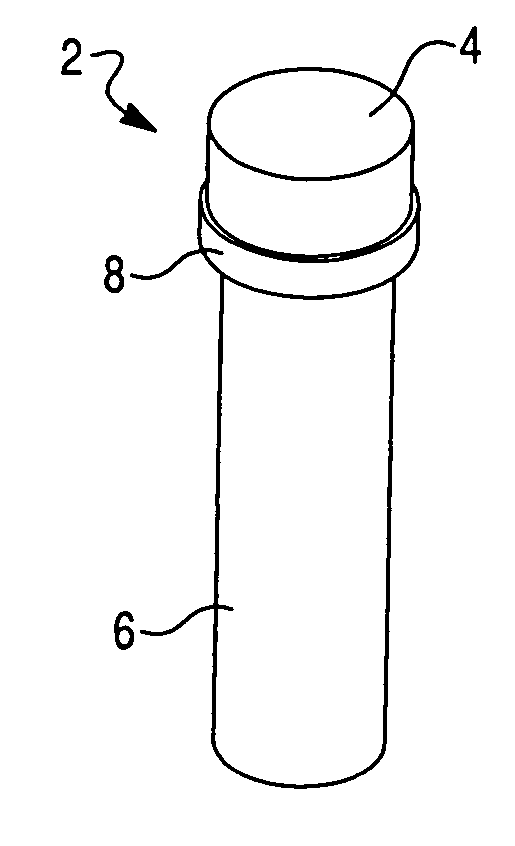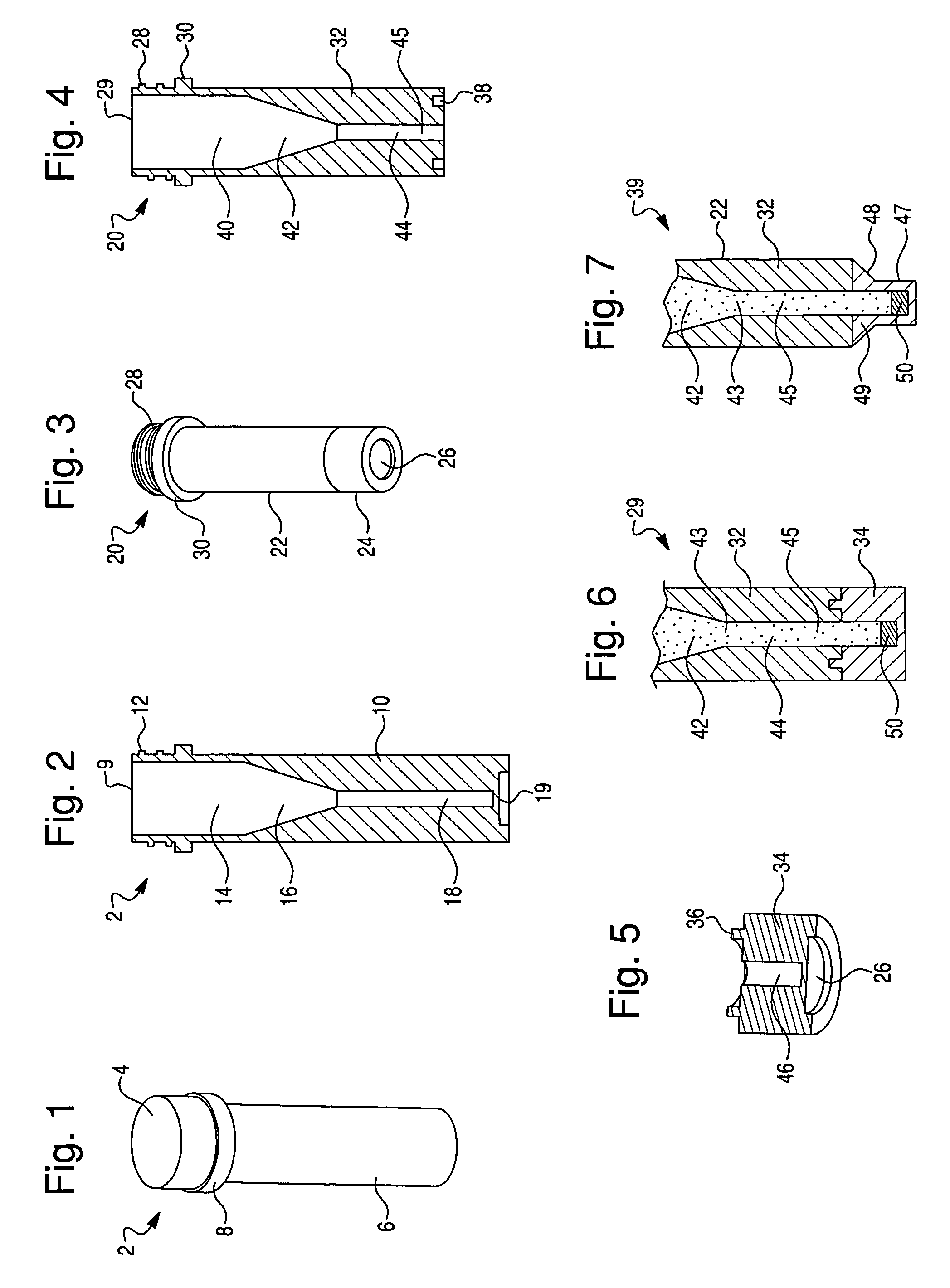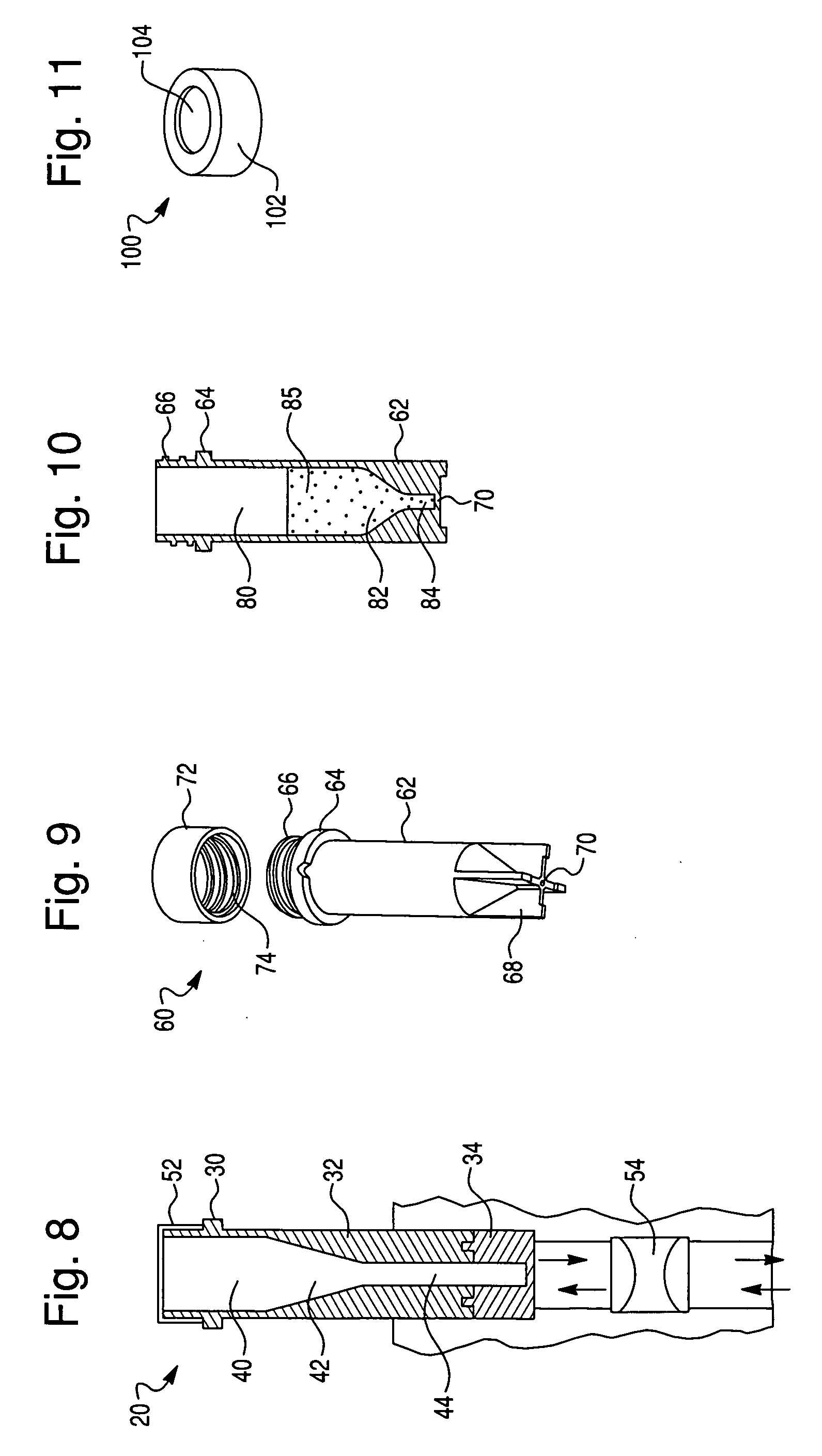Separation device for use in the separation, characterization and/or identification of microorganisms
a technology for separation devices and microorganisms, which is applied in the direction of fluorescence/phosphorescence, instruments, and analysis material containers, etc., can solve the problems of bloodstream infections, high morbidity and mortality, and take several days to perform
- Summary
- Abstract
- Description
- Claims
- Application Information
AI Technical Summary
Benefits of technology
Problems solved by technology
Method used
Image
Examples
example 1
Devices and Methods for the In Situ Identification of Purified Microbial Pellet
[0050]To explore the potential of the rapid in situ separation and identification of microorganisms in a separation device, several devices were designed and molded from UV-transparent plastic, in accordance with this invention. These devices contained several common features, including a closure, sample reservoir and a tapered optical quality lower region to enable spectroscopic interrogation of the sedimented microbial pellet from below and / or the side, and features that facilitated the coupling of the device to a spectrofluorimeter. The devices must also be capable of withstanding relatively high g-forces during the separation step. Several iterations of this tube were designed to improve microbial recovery, fluorescence reproducibility and reduce contamination by stray scattered light. The tube was also designed to be hermetically sealed.
[0051]Optical interrogation of the sedimented microbial pellet w...
PUM
| Property | Measurement | Unit |
|---|---|---|
| volume | aaaaa | aaaaa |
| volume | aaaaa | aaaaa |
| volume | aaaaa | aaaaa |
Abstract
Description
Claims
Application Information
 Login to View More
Login to View More - R&D
- Intellectual Property
- Life Sciences
- Materials
- Tech Scout
- Unparalleled Data Quality
- Higher Quality Content
- 60% Fewer Hallucinations
Browse by: Latest US Patents, China's latest patents, Technical Efficacy Thesaurus, Application Domain, Technology Topic, Popular Technical Reports.
© 2025 PatSnap. All rights reserved.Legal|Privacy policy|Modern Slavery Act Transparency Statement|Sitemap|About US| Contact US: help@patsnap.com



